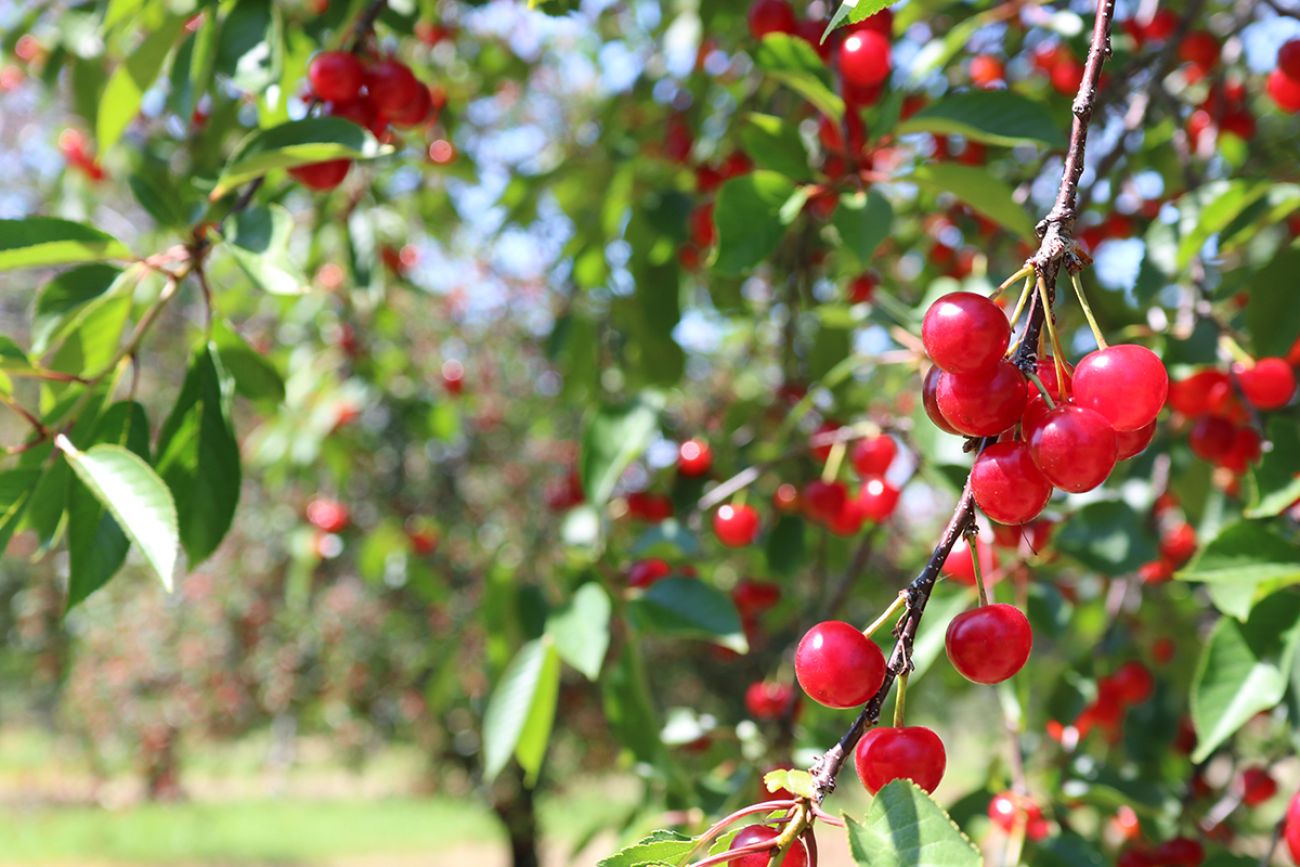Farmers thankful for cool temperatures after high mid-April temperatures

LANSING –Many Michiganders likely were frustrated by the sudden return to frigid temperatures last week and the nearly 50-degree temperature shift could be a problem for some of this year’s fruit crop. But farmers say they are generally thankful for cooler temps.
These wild swings in temperatures are never good, said Jeffrey Andresen, Michigan’s state climatologist.
The swings do happen from time to time, Andresen said, but for the most part it is very unusual and plants require time to adapt.
Related:
- Northern lights visible in Michigan: where to see aurora borealis forecast
- Change Michigan’s Nov. 15 deer season opener? No way, DNR says
- Michigan Democrats: Utilities must use 100% carbon free energy by 2035
How often the stark shifts happen is tied to climate change.
The impact on agricultural systems, he said, is certainly more negative than positive. The burst of warmth leaves farmers and growers in a state of vulnerability because it is “moving things along too rapidly.”
The crops most likely to be impacted by the warm temperatures are specialty crops, or crops that are harvested yearly, but take years to mature, said Andresen, who is also a Michigan State University meteorology professor.
Specialty crops typically include fruit, tree nuts and vegetables.
Fruit trees, he said, are susceptible to the changes in temperature because of how trees enter into a hardening process in the fall.
While this process helps them withstand subzero temperatures, that changes quickly when warmer temperatures arrive.
“As soon as it begins to develop in the spring, responding to its environment, then it loses that resistance rapidly,” Andresen said. By the time trees reach April, the damage threshold moves from 30 degrees below zero to 28 degrees above zero.
This makes exiting the dormant state very important for fruit farmers, Andresen said. Once the trees bloom, farmers have to protect them from a spring freeze or risk damaging tree buds.
Andresen said the extreme changes have potential to be bad if the weather in the next few weeks is cold.
Andresen said he is fairly optimistic that the recent temperature swing did not cause major problems for fruit markets because it is still early in the development cycle for crops.
“Many fruit tree species have more buds than they need to set up a crop,” Andresen said. “So you can lose some of the flowers and buds, and still be fine, still be okay and profitable.”
The 80-degree days in April were an anomaly, especially since it was followed by snow, said Lee Lutes, the head winemaker at Black Star Farms in Grand Traverse County.
Lutes said he is not too worried about his vineyard because mature grapevines are deeply rooted plants, making them less susceptible to brief changes in temperatures.
Normally, grapevines are rooted 5 to 6 feet underground by the time they mature, and the oldest roots can reach 12 feet.
The sweet and tart cherry crop could have been damaged, Lutes said. At about 12 inches deep, orchard trees have much more shallow roots, meaning the soil around the roots heats up easily.
Generally the vineyard will be all right, Lutes said, and if anything, he is thankful for the cool off because it likely slowed down the potential growth that may have happened during the warm temperature.
Lutes said he is concerned about the next full moon on May 5, because that is when there is a high barometric pressure.
“With high pressure, we often see clear skies and clear skies are where we see cold nights,” Lutes said. “It’s often that first full moon in May when we are holding our breath a little bit.”
AJ’s Berry Farm in Alpena County had to take the straw covering off its strawberry fields earlier than co-owner A.J. MacArthur wanted to.
MacArthur is more concerned about the warm temperatures causing the crops to flower in early May because they have had cold weeks in May in the past.
Should a cold snap happen in May, MacArthur said he will irrigate the plants to freeze water during the cold temperatures. This freezing releases heat which MacArthur said helps keep the strawberry plants above freezing temperatures.
The warm temperatures also brought about the end of the maple syrup season because the trees respond quickly to the weather. It’s likely it would have lasted only about a week longer, MacArthur said.
“Trees respond by putting out leaves and that changes the flavor profiles of the syrup,” he said. “Bacteria-wise, you get more bacteria in your sap lines and then that spoils the syrup tastes.”
This story was originally published by Capital News Service.
Michigan Environment Watch
Michigan Environment Watch examines how public policy, industry, and other factors interact with the state’s trove of natural resources.
- See full coverage
- Subscribe
- Share tips and questions with Bridge environment reporter Kelly House
Michigan Environment Watch is made possible by generous financial support from:
Our generous Environment Watch underwriters encourage Bridge Michigan readers to also support civic journalism by becoming Bridge members. Please consider joining today.
See what new members are saying about why they donated to Bridge Michigan:
- “In order for this information to be accurate and unbiased it must be underwritten by its readers, not by special interests.” - Larry S.
- “Not many other media sources report on the topics Bridge does.” - Susan B.
- “Your journalism is outstanding and rare these days.” - Mark S.
If you want to ensure the future of nonpartisan, nonprofit Michigan journalism, please become a member today. You, too, will be asked why you donated and maybe we'll feature your quote next time!






